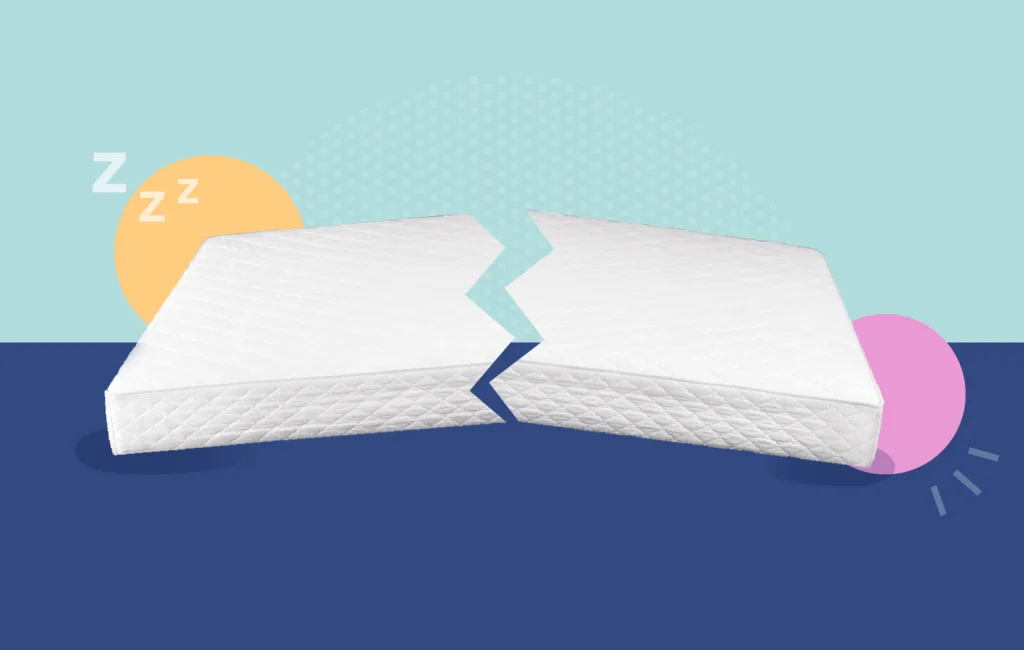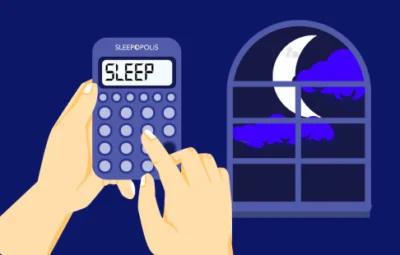
Even the most in love couples rave about it. Sleep divorces are having their moment, and involve having your own space, time, or room to sleep separate from your partner, to optimize sleep and decrease interruptions. But not all sleep divorces (like marital divorces) look the same, though many have the same purpose behind them.
As part of this year's 25 Days of Giving campaign (check this page for daily giveaways every day through Christmas!), Sleepopolis is taking a closer look at how to share a bed (and a bedroom): whether it's with your partner, pet, sibling, or you're sharing a bedroom due to downsizing, or you don't have a spare room. In the spirit of the holidays and 25 Days of Giving, we're putting a spotlight on sharing.
One woman said on TikTok that she slept with her snoring, sweaty, bathroom-tripping husband for 15 years. They tried a king bed, he got a CPAP machine for snoring, and other interventions — until a sleep divorce helped. She says people need to stop seeing it as a negative thing. One commenter suggested calling it a sleep alliance rather than a divorce, since both people are agreeing to work together for better sleep.
Dr. Susan Trotter, a relationship coach in the Boston area, says intentionally choosing to sleep separately, not due to relationship conflict, happens for a variety of reasons. “Ideally, the couple discusses it openly and is intentional about it for whatever reason it might be (e.g., snoring, insomnia, temperature, different schedules, desire for more space, etc),” she says.
Here’s her take on common sleep divorce set ups, and the pros and cons of each.
Sleeping apart in separate beds in the same room:
One option is sleeping in separate beds in the same room, which might work well for those who need more space but aren’t bothered by any sounds their partner makes. People try this for a wide variety of reasons including religious beliefs around times they should be sleeping apart.
Related: Best Latex Mattress
Expert take: “The advantage of this situation is that the couple still gets to talk, watch tv and bond while sleeping separately but still sharing the room. This ability to still connect is good for the health of the relationship and lends itself to greater intimacy. It also allows for each person to have more personal space while sleeping. However, the other reasons that people may choose a sleep divorce aren’t addressed in this situation and subsequently, issues like snoring or different schedules remain potential problems.”
Sleeping in separate rooms
Sleeping in separate rooms might feel like a more severe sleep break up, but it may also lead to much better days, and a more well rested couple for some. Some partners point to the fact that they can even decorate their own rooms, and make it a space of their own, beyond just the sleep benefits.
Expert take: “Sleeping in separate rooms has the opposite impact. It allows people to potentially sleep better because any issues like snoring , schedules, temperature preferences are resolved. Getting more rest may subsequently lead to better communication and more connection because each person feels better. The challenge is that it doesn’t allow for snuggling and connection, including the possibility for physical intimacy in bed. If people choose this option, it is important that they still find time to connect with each other before they go to bed and even perhaps schedule date nights and sex.”
Sleeping apart in either of the above situations during the week but together on the weekend
This is the custody schedule option of a sleep divorce, which means business during the week when early morning wake ups for work are the priority — with room for fun and bonding on the weekends.
Expert take: “Choosing this option allows couples to experiment with sleep divorce and get better sleep during the week while still having the opportunity to connect and experience more intimacy on weekends. This option may be a nice compromise. The one challenge with it is that it requires a readjustment each time the couples separate and then come back together and that can cause some distress or disruption with sleep.”
Adjustable mattress to accommodate two unique sleep styles/needs
Mattresses from Sleep Number to TempurPedic and numerous others have started offering split preference bases, mattresses, firmnesses, and other customizable options.
Expert take: “This option addresses the issues of personal space, differences in mattress type and temperature and may allow for better sleep. The downside to it is that it doesn’t address other issues that may lead some couples to contemplate sleep divorce, such as insomnia, schedules and more. It does, however, provide the opportunity for more connection and intimacy that sleeping in separate bedrooms doesn’t allow.”
If the above feels too intense, you can also try a separate blanket — a “blanket divorce”. Maybe just having your own covers, and not fighting to keep them all night, is the “separation” rather than a full sleep divorce. Regardless, talk to your partner openly about both your sleep and relationship needs to determine the best set up for your unique relationships. And finally, keep in mind it might take a few tries to find the arrangement that works for you.



























